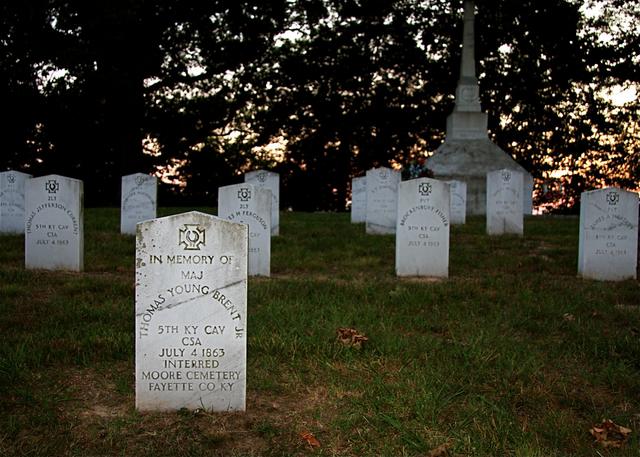| ||||||||||
Dr. Ronald P. Rogers CHIROPRACTOR Support for your body's natural healing capabilities 270-384-5554 Click here for details 


Columbia Gas Dept. GAS LEAK or GAS SMELL Contact Numbers 24 hrs/ 365 days 270-384-2006 or 9-1-1 Call before you dig Visit ColumbiaMagazine's Directory of Churches Addresses, times, phone numbers and more for churches in Adair County Find Great Stuff in ColumbiaMagazine's Classified Ads Antiques, Help Wanted, Autos, Real Estate, Legal Notices, More... 
|
The Battle of Tebb's Bend: 148 years (and one day) ago, today "Jim" edits Adair Countian P.H. Bridgewater's account of the Battle of Tebb's Bend telling how the famous General John Hunt Morgan's overcoat came into the writer's hands. Click here for Keepsake Printable copy, P.H. Bridgewater's: The Battle of Tebb's Bend By "Jim" Adair County News, March 10, 1909 (reprinted from the Louisville Dispatch) FIGHT AT GREEN RIVER BRIDGE* These are variant lines from the poem, "The Grave of Bonaparte," frequently attributed to H.S. Washburn. The author of this article, Patrick H. Bridgewater, was born in 1834, the oldest child of John F. & Elizabeth (Groves) Bridgewater, and died in 1912. Gen. Morgan's overcoat passed to Patrick H. Bridgewater's daughter, Annie E., who had married Nathan Champness "Champ" Butler. It then passed to Annie E.'s daughter, Nellie E. Butler, who married Hugh Hutchison; then to Nellie's daughter, Elizabeth Hutchison, who married Ralph Eugene "Pete" Grider; and thence to Elizabeth's daughter. I recall hearing Mrs. Nellie Butler Hutchison speak of the overcoat sometime around 1960. -JIMAdditional note: I meant to send this in time for ColumbiaMagazine.com to post it on the 147th anniversary of the Battle (July 3rd, 1863), but with this d*mn fast time I'm always late, not to mention most generally steered up. -JIM This story was posted on 2010-07-04 13:19:13
Printable: this page is now automatically formatted for printing.
Have comments or corrections for this story? Use our contact form and let us know.
More articles from topic Local History:
One Hundred (m/l) Years Ago - An old tragedy re-called: 1841 Burk murders The Blind Man saw everything, little boy learned July 2010 Adair Genealogical Society meeting cancelled Picture of Blind Mans Store brings back memories Joe DeSpain talk on Dr. Pepper plant is August 2, 2010 House where Selby's machine was 3 miles from Butler Fort Random Thoughts from North of the River 100 Years Ago: Barger & Wheat, Superbas superb James Wilson Selby is proven Revolutionary War Patriot Adair Co., KY, perpetual motion machine: Was it a water ram? View even more articles in topic Local History |



|
||||||||
|
| ||||||||||
|
Quick Links to Popular Features
Looking for a story or picture? Try our Photo Archive or our Stories Archive for all the information that's appeared on ColumbiaMagazine.com. | ||||||||||
|
Contact us: Columbia Magazine and columbiamagazine.com are published by Linda Waggener and Pen Waggener, PO Box 906, Columbia, KY 42728. Please use our contact page, or send questions about technical issues with this site to webmaster@columbiamagazine.com. All logos and trademarks used on this site are property of their respective owners. All comments remain the property and responsibility of their posters, all articles and photos remain the property of their creators, and all the rest is copyright 1995-Present by Columbia Magazine. Privacy policy: use of this site requires no sharing of information. Voluntarily shared information may be published and made available to the public on this site and/or stored electronically. Anonymous submissions will be subject to additional verification. Cookies are not required to use our site. However, if you have cookies enabled in your web browser, some of our advertisers may use cookies for interest-based advertising across multiple domains. For more information about third-party advertising, visit the NAI web privacy site.
| ||||||||||




















































